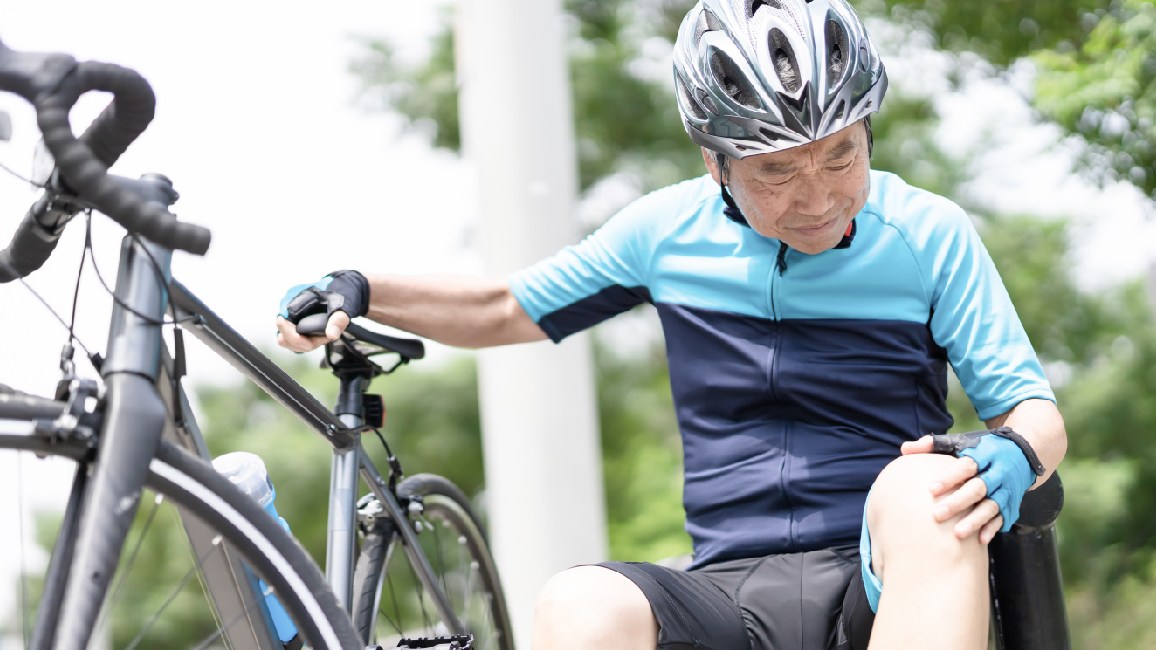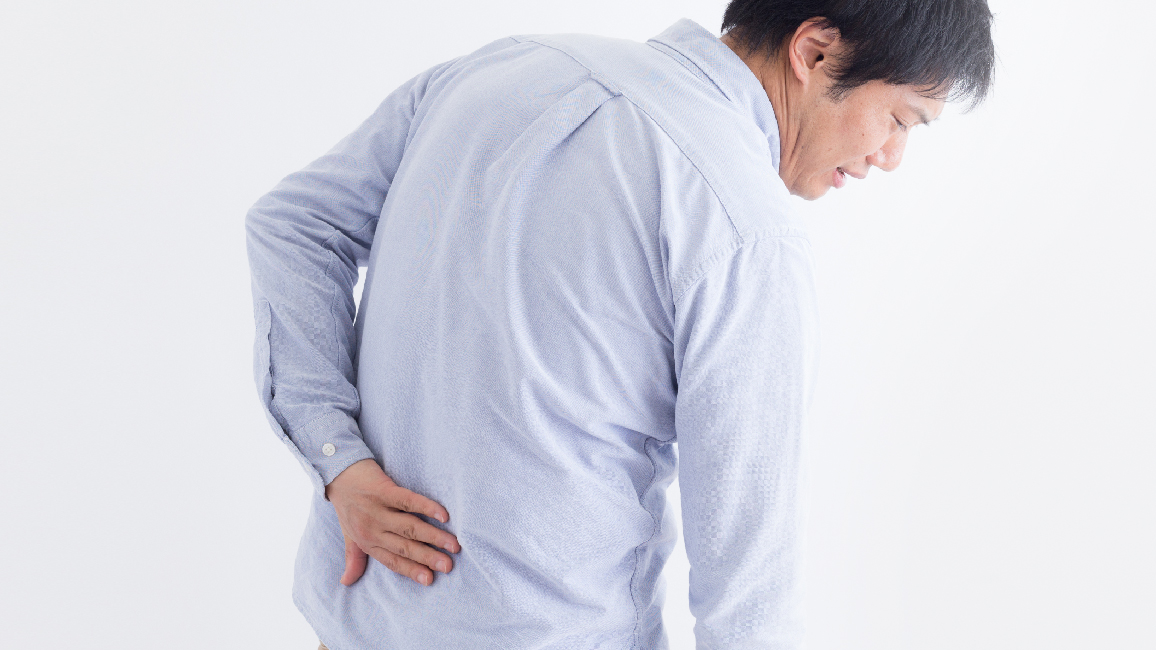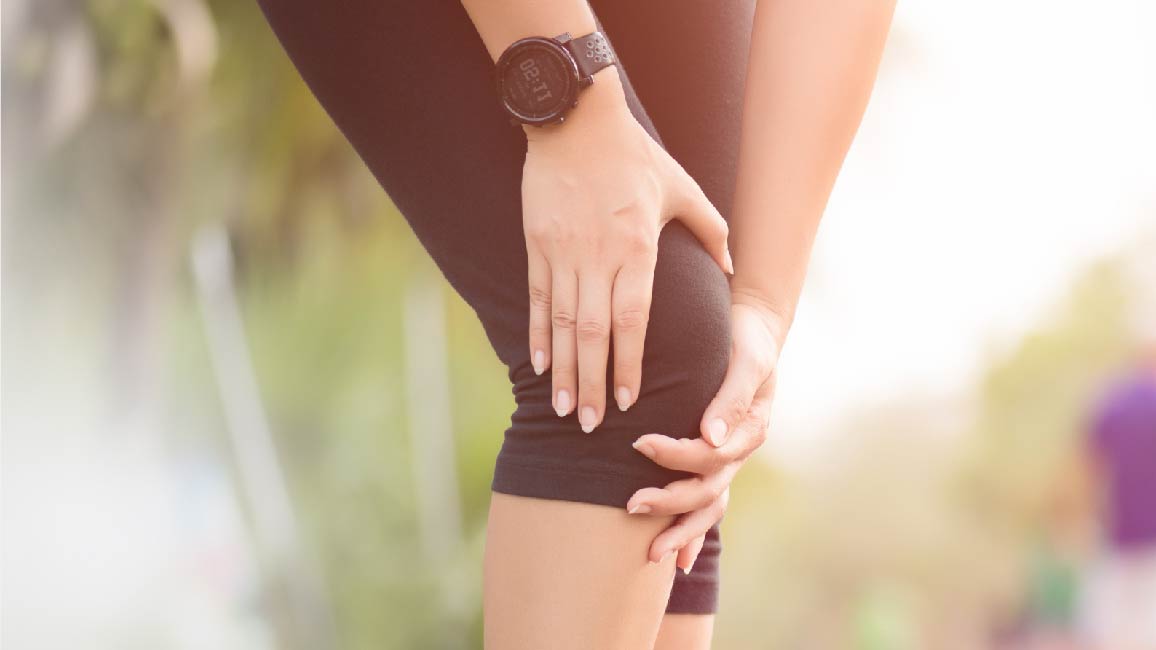Knee pain often, sitting up and walking hurts signs of osteoarthritis
Center : Orthopedics Center
Article by : Dr. Nithiwut Pinsiranon

Knee pain is a common symptom and should not be ignored. Because if the diagnosis is delayed, the consequence may end in osteoarthritis. People with severe knee osteoarthritis will have severe pain or knee deformities, stiffness, unable to walk normally, unable to carry out daily life as usual. This results in both physical and mental suffering. In addition, people with osteoarthritis of the knee should be properly treated. Currently, there is a method to replace the lining through artificial knee joint. This is a universal method that is recognized as the best treatment result, it relieves knee pain, the knee joint returns to normal movement and have a better quality of life.
Choose to read by topic:
How do you know what kind of knee pain indicates osteoarthritis
Osteoarthritis of the knee is a slow progression. Often found in people over the age of 40, more common in women and people who are overweight, often on both sides when one knee begins to deteriorate and the other knee deteriorates a few years later.
Early symptoms Knee pain begins when moving, such as walking, going up and down stairs, or sitting with your knees folded. Symptoms improve when the use of the joint is stopped, together with symptoms of stiffness especially when stopping motion for a long time. When moving the joints, there is a feeling of friction in the bones or loud noises in the joints.
When there is severe osteoarthritis knee pain it becomes worse, sometimes pain at night may feel the skeletal part on the side of the joint. When the thigh muscles are fully contracted, there will be pain or tingling around the kneecap. If there is inflammation, there will be swelling, heat, and fluid is detected in the joint cavity. If there is a deterioration for a long time, it will be difficult to stretch or bend the knee joints. Atrophy of the thigh muscles, the knee joint is bent, loose, or distorted, and having pain when walking or moving making walking and daily life difficult.
Osteoarthritis Causes
Osteoarthritis caused by degeneration of articular cartilage in terms of shape, structure, function of the joints and bones near the joints, the changes that occur cannot return to their original state and may have more severe deterioration. The causes can be divided into two types as follows:
- Primary degeneration or unknown cause It is a condition caused by age-related deterioration of the cartilage surface. Important factors affecting the deterioration of the knee include those aged 40 years and over. Found more in females than males, excessive body weight, use, posture, activities that put a lot of pressure on the knee joints, such as kneeling, crouching, cross-legged, often going up and down stairs, etc. Defects of joint components such as loose knee joints, weak thigh muscles and heredity.
- Secondary degeneration It is a degenerative condition with known causes, such as having been in an accident, having a tendon injury, chronic injury to the knee joint from work or playing sports. Rheumatoid arthritis, gout, infectious arthritis, endocrine diseases such as obesity.
Diagnosis of osteoarthri
Osteoarthritis can be detected by X-ray of the knee joint. The film shows a narrow gap between the upper knee and the lower knee, showing wear and tear of cartilage. In addition, the doctor will take a family history, knee injury history and measure the ability to bend and stretch the knee joint.
Osteoarthritis treatment
- Treatment without medications Help relieve pain and help the knee move better, including support by reducing the pressure on the knee joint together with making the thigh muscles stronger. Modify the behavior, weight control, muscle management and exercise for health which must be properly advised by a medical professional.
- Treated by medication Under a doctor's treatment plan, such as topical, non-steroidal analgesic and anti-inflammatory drugs, and capsaicin, used as a topical massage, which induces local heat, painkillers, paracetamol, Non-steroidal anti-inflammatory drugs (NSAIDs) in oral and injectable forms which helps reduce pain and inflammation as well and muscle relaxants, etc.
- Treated by surgical methods
- Knee arthroscopy To check the condition and clean the joints, a treatment that is likely to be effective in those with minor burrs that cause pain in the joints. Used to treat osteoarthritis in the early stages only. If the joints are severely damaged it is recommended to replace the joint surface.
- Joint Alignment Surgery In case of deformation of the joints, correct the weight distribution to the point where the joint surface remains good.
- Total Knee Arthroplasty (TKA) is a method of treating moderate to severe knee osteoarthritis and is recognized as the most effective universal method for relieving knee pain. The knee joint returned to move well as before.
Knee replacement surgery technology treat osteoarthritis
Nowadays, Osteoarthritis treatment with knee replacement surgery is very popular, because the results of the treatment are fast and allows the patient to return to normal life without suffering knee pain again. Replacement of the knee joint surface is made of stainless steel mixed with nickel, cobalt, titanium, and the prosthesis is made of a special plastic material (Polyethylene) non-reactive to the body, lightweight and durable to use. It is known to orthopedic physicians around the world.
The indications for surgery are as follows:
- There is a wear and tear from osteoarthritis that is clearly visible on radiographs.
- There is pain, swelling, and stiffness in the knee joint which affects various activities in the patients daily life.
- Other treatments have been ineffective.
Surgical procedures
It is a surgery to replace only the surface of the 3 bones that make up the knee joint. (The bones of the thigh, shin and patella) where the doctor will cut the worn or inflamed part of the joint surface with a thickness of about 8-10 mm and then put the prosthesis on the femur and shin bone, both of which are made of fine metal. with a special plastic that acts like cartilage sandwiched between a metal prosthesis. The prosthesis inserted behind the kneecap is also made of plastic and special cement is used to hold the joint and bone to keep it strong and durable for a long time.
Practice after surgery
After osteoarthritis surgery The patient has to stay in the hospital for 4-5 days, about 1-2 days after the surgery the patient start learning to walk with a walker under the supervision of a doctor and physical therapist. Including the arrangements in the house to be suitable and safe for the patient, and see a doctor on a regular basis to monitor for symptoms and possible side effects after surgery, such as post-surgical infections and loose knee joints after use for a while, etc.
Knee replacement surgery a surgery to improve the quality of life, make patients recover from pain and suffering able to walk normally or close to normal Able to go out for daily life exercise or travel, including the beautiful shape of the knee joints.
Online Consultation
Free of Charge
Article of Orthopedics Center






